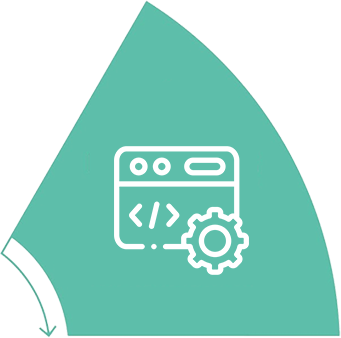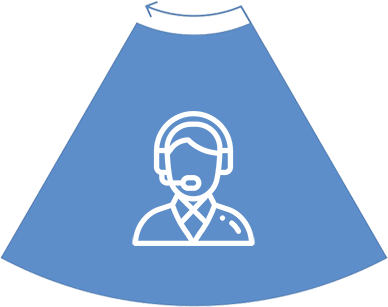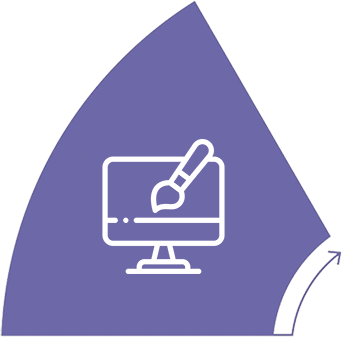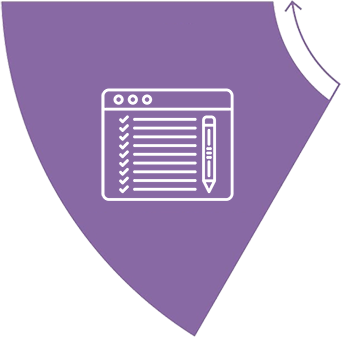In the dynamic landscape of business, growth is often accompanied by complexity. As companies expand, so does the intricacy of their operations, making manual processes and disconnected systems insufficient. This is where Enterprise Resource Planning software emerges as the tool to streamline operations and enhance efficiency.
Most businesses possess operational and financial systems in place. However, when these systems remain isolated, they fall short of addressing the evolving needs of a growing enterprise. As businesses expand, the onus is on their systems to keep pace.
ERP software is seen as the catalyst for change, seamlessly collecting and organizing crucial business information. The metamorphosis from siloed systems to an integrated ERP solution marks the transformative journey toward agility and efficiency.
The scope of ERP’s capabilities is vast and impactful. From optimizing financial management to invigorating the supply chain, from augmenting operations to enhancing reporting accuracy, from streamlining manufacturing to nurturing human resources, ERP stands as a versatile guardian of business efficiency.
In this blog, we will discuss the need for a cutting-edge ERP for business and what is an ERP implementation plan and equip you with the knowledge necessary to embark on your ERP implementation journey confidently.

Decoding ERP – More Than Just an Acronym
At its core, ERP encapsulates the orchestration of critical business processes that drive an enterprise forward. These encompass finance, HR, manufacturing, supply chain, services, and procurement, among others. Imagine ERP as the glue that seamlessly binds these diverse functions into a unified system. In its essence, ERP efficiently manages these processes through integration, forming the bedrock of a cohesive organization. Often dubbed the “system of record,” ERP encapsulates the organizational heartbeat, safeguarding the integrity of data.
The Essence of ERP
Picture ERP as the central nervous system of an enterprise, orchestrating automation, integration, and intelligence in tandem.
The orchestra of operations that is an enterprise relies on ERP for diverse functions. Finance leverages ERP for expeditious closure of accounts. Sales finds its ally in ERP to orchestrate and manage customer orders. Logistics thrives on the robust support of ERP, ensuring timely delivery of products and services. Accounts payable seeks the precision of ERP to uphold accurate and punctual supplier payments. Management demands instantaneous insights into company performance, shaping timely decisions. Banks and shareholders entrust the ERP system with the responsibility of furnishing accurate financial records and insightful analyses.
The vitality of ERP is mirrored in the surge of its adoption across businesses. The data from G2 echoes this sentiment, projecting the global ERP software market to burgeon to a remarkable $78.40 billion by 2026, underpinned by an impressive (CAGR) of 10.2 per cent from 2019 to 2026.
Streamline your Business Operations and Drive Growth with an ERP Implementation
From Legacy to Cutting-Edge ERP
The evolution of ERP has been nothing short of a technological odyssey. While its roots trace back to decades past, today’s ERP landscape has undergone a profound metamorphosis. No longer confined to on-premises solutions, modern ERP systems have transcended limitations and embraced cloud-based platforms. With Artificial Intelligence (AI) and machine learning being integrated, they have evolved into engines of intelligent automation, rendering unprecedented efficiency and real-time insights across businesses.
A modern ERP solution acts as a catalyst for connecting all the dots, weaving together disparate data points into a cohesive tapestry. This intricate web of data translates into profound insights, providing you with a panoramic understanding of your business’s inner workings. Armed with these insights and ERP implementation strategies, businesses can orchestrate the optimization of processes, unlocking unparalleled efficiency across every operational domain.
The Journey of Implementation: A Careful Path
Yet, the road to successful ERP implementation is not without challenges. If you wonder how to implement an ERP system, then remember this journey requires meticulous planning, structured phases, and clear objectives. Divided into six distinct stages, ERP implementation involves discovery and planning, design, development, testing, deployment, and support.
Discovery & Planning

Discovery & Planning
The initial phase in the ERP implementation steps involves setting up a project team, defining system requirements, and selecting an ERP system. Involving senior management, experts, and an external consultant ensures comprehensive planning in ERP implementation phases.
Development

Development
Armed with a robust design, software configuration, and customization take precedence. This phase includes software development, user training material creation, and planning data migration.
Deployment

Deployment
The day of reckoning arrives as the system goes live. Potential issues are addressed promptly, and a phased deployment strategy ensures risk mitigation.
Support & Updates

Support & Updates
Post-deployment nurturing includes user support, updates, and additional configuration as new features are added to the system.
Design

Design
Detailed requirements and user input drive this phase, leading to the development of efficient workflows and business processes aligned with the new system.
Testing

Testing
Rigorous testing ensures the ERP system’s capabilities are rigorously examined. User training and data migration are key elements of this phase.

Discovery & Planning
The initial phase in the ERP implementation steps involves setting up a project team, defining system requirements, and selecting an ERP system. Involving senior management, experts, and an external consultant ensures comprehensive planning in ERP implementation phases.

Development
Armed with a robust design, software configuration, and customization take precedence. This phase includes software development, user training material creation, and planning data migration.

Deployment
The day of reckoning arrives as the system goes live. Potential issues are addressed promptly, and a phased deployment strategy ensures risk mitigation.

Support & Updates
Post-deployment nurturing includes user support, updates, and additional configuration as new features are added to the system.

Testing
Rigorous testing ensures the ERP system’s capabilities are rigorously examined. User training and data migration are key elements of this phase.

Design
Detailed requirements and user input drive this phase, leading to the development of efficient workflows and business processes aligned with the new system.
ERP Implementation Best Practices
The process of implementing an ERP system is not a destination in itself; rather, it marks the beginning of a transformative voyage for an organization. To fully reap the benefits and maximize returns, it’s essential to not only execute the implementation but also to utilize the system optimally. To achieve this, adhering to best practices at each stage of the phased ERP implementation process is paramount.
Let’s delve into these best practices, which are not just a blueprint but a comprehensive guideline to ensure a successful ERP implementation. These practices encompass a spectrum of considerations, from planning and design to testing, training, and ongoing support.

Thorough Planning
Lay a robust foundation by meticulously planning the project’s scope, resources, and budget.


Comprehensive Support
Allocate resources for post-deployment support, training, and issue resolution, ensuring the system’s continued success.


Data Migration Strategy
Carefully plan data migration to avoid transferring obsolete or unnecessary data. It’s an opportunity to cleanse and streamline organizational data.


Effective Communication
Continuous communication to stakeholders is vital, conveying the why, how, and what of ERP implementation.
ERP Implementation Timeline
The complexity of an ERP implementation journey is influenced by various factors, and often, the planning and discovery phase presents unique challenges. Convincing stakeholders throughout the organization to allocate the required time and resources and establishing a clear project timeline can be formidable. Embarking on subsequent ERP implementation phases without a comprehensive plan in place can lead to complications down the line.
The initial phase lays the foundation for success, demanding a meticulous estimate of timeframes and resource needs. Formulating a comprehensive implementation timeline can be overwhelming due to the intricate interplay of numerous elements. Delays frequently arise when initial timelines prove overly ambitious. Regularly assessing and adjusting the timeline at key junctures in the ERP implementation process can help maintain alignment with realistic expectations.
The involvement of executives in the nascent stages of ERP implementation plan holds immense significance. As the ERP project contends for resources amid daily priorities, strong executive sponsorship, often led by figures like the CEO or CFO, is vital. Such sponsorship ensures robust organizational support. Without it, the implementation team, including project managers and departmental heads, could face challenges in garnering the necessary backing.
ERP implementation is an investment that echoes across time, resources, and operations. An impeccably structured implementation plan coupled with ongoing optimization paves the way for long-term ERP success. As technology advances and business landscapes evolve, ERP remains a guiding star for businesses in pursuit of seamless operations and sustained growth.
The inaugural phase of ERP implementation is discovery and planning. During this crucial phase, a dedicated project team assembles to craft an ERP project plan, serving as a guiding framework for the endeavour. Initial meetings transpire, accompanied by the creation of documentation as the team delves into identifying existing challenges with ERP implementation and potential solutions. In this phase, thorough research is conducted to select a suitable system while meticulously defining intricate system requirements.
You may be contemplating whether the moment has arrived for a transformative change. Here are three discernible signs that could signal the necessity for embracing new ERP software:
Stifled Growth with Current Tools: While basic tools might have sufficed so far, your expansion potential and global growth aspirations are hampered by the present software’s constraints. A superior ERP system, characterized by its adaptability and scalability, could be the catalyst needed to propel your endeavors forward unhindered.
Disintegration of Systems: The dynamic landscape of technology often highlights the inadequacy of disjointed systems. Instances where the compatibility between your fresh accounting software and antiquated HR system falters, causing an unnecessary drain on time and resources, underscore the call for a comprehensive ERP solution.
Failure to Fulfill Customer Expectations: In a world where both your workforce and clientele are increasingly mobile, an inadequately accommodating system becomes a liability. Recognizing the urgency to equip your staff with apt tools and satisfy customer demands with efficiency not only safeguards your competitive edge but propels it forward.
As you ponder these indicators, remember that ERP software holds the potential to address these challenges, catalyzing growth, synchronizing systems, and elevating customer experiences to heights previously unattained.
Drive ERP Implementation Success with Nsight
With a proven history of successful project implementations across diverse clientele, Nsight can be your partner in ERP modernization. Our ERP implementation services encompass data migration, system integration, process optimization, and change management, all orchestrated to harmonize seamlessly within your existing workflows. Our ERP implementation consultant provides end-to-end ERP implementation services, ensuring a seamless transition that maximizes your business outcomes.
Let us Elevate Your Business to New Heights of Efficiency and Innovation
Frequently Asked Questions (FAQs)
Change management strategies include involving employees early, clear communication, providing training and support, addressing resistance, and creating a culture of adaptability. These strategies help employees transition smoothly to the new ERP system.
For small and medium-sized businesses, it’s essential to choose an ERP system that aligns with your specific needs and budget. Careful planning, clear objectives, and involving key stakeholders can greatly enhance the chances of success.
The Return on Investment (ROI) for ERP implementation varies by organization and depends on factors like increased efficiency, reduced errors, and improved decision-making. Calculating ROI involves measuring the benefits against the costs of implementation.
ERP implementation failures can result from poor planning, inadequate training, lack of executive buy-in, scope creep, and insufficient customization. Successful ERP projects require careful management of these factors.
ERP implementation costs vary widely based on factors like the size of the organization, complexity of the system, customization, and the chosen implementation approach.
Common challenges include resistance to change, data migration complexities, customization issues, budget overruns, and scope creep. Identifying and addressing these challenges early is vital for a smooth implementation.
ERP implementation plan templates are available from ERP vendors, consultants, and online resources. You can also customize templates to suit your organization’s specific needs.
We will measure ERP implementation success by tracking efficiency improvements, data accuracy, cost reduction, customer satisfaction, ROI, user adoption, system uptime, compliance, scalability, and long-term alignment with our strategic goals.
About the Author

Sudhakar Jha has over a decade of experience and expertise in helping clients across multiple industries adopt emerging technologies. As an enterprise architect, he combines his expertise with a keen understanding of business needs to enable enterprises to leverage cutting-edge technologies to achieve their goals. Sudhakar is an experienced solution leader and certified in multiple ERP, CX, and cloud technologies.





